Let’s face it — there’s nothing quite as frustrating as a clogged toilet when you don’t have a plunger nearby. It feels like a mini emergency, and sometimes the nearest store is miles away or it’s the middle of the night. But don’t panic! There are several clever ways you can get your toilet working again using simple household items or creative techniques.
In this guide, I’ll walk you through seven easy and effective methods to unclog a toilet without a plunger. These tips have been tested by countless homeowners and DIYers, so you can trust they work. Plus, you’ll learn a bit about why toilets clog and how to prevent it in the future. Ready? Let’s dive in!
1. Pour in Some Hot (But Not Boiling) Water
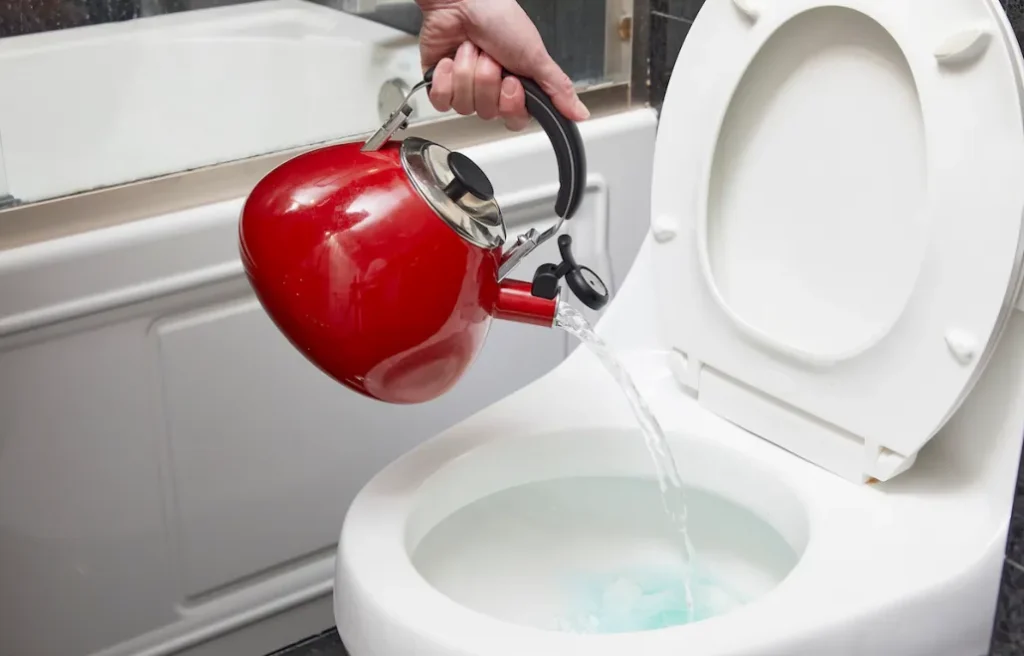
One of the simplest and quickest ways to clear a clog is with hot water. The heat helps to soften whatever is blocking the drain, making it easier to flush away. However, it’s important that the water is hot — but not boiling. Boiling water can damage the porcelain of your toilet or even crack the pipes, so avoid using water fresh off the stove.
Here’s how to do it right:
- Heat a bucket of water until it’s steaming but not boiling.
- From about waist height, carefully pour the water into the toilet bowl.
- The force of the water can help push the clog down the drain.
- Let it sit for 10 to 15 minutes, giving the hot water time to work.
- Try flushing the toilet after that.
If the water level goes down and the flush works, great! If not, you might want to try this again or combine it with the next method on the list for better results.
Why does this work? Hot water breaks down grease and softens materials like toilet paper, which are often the main culprits behind blockages. Plus, the extra volume can push through stuck waste.
2. Swish in Some Dish Soap
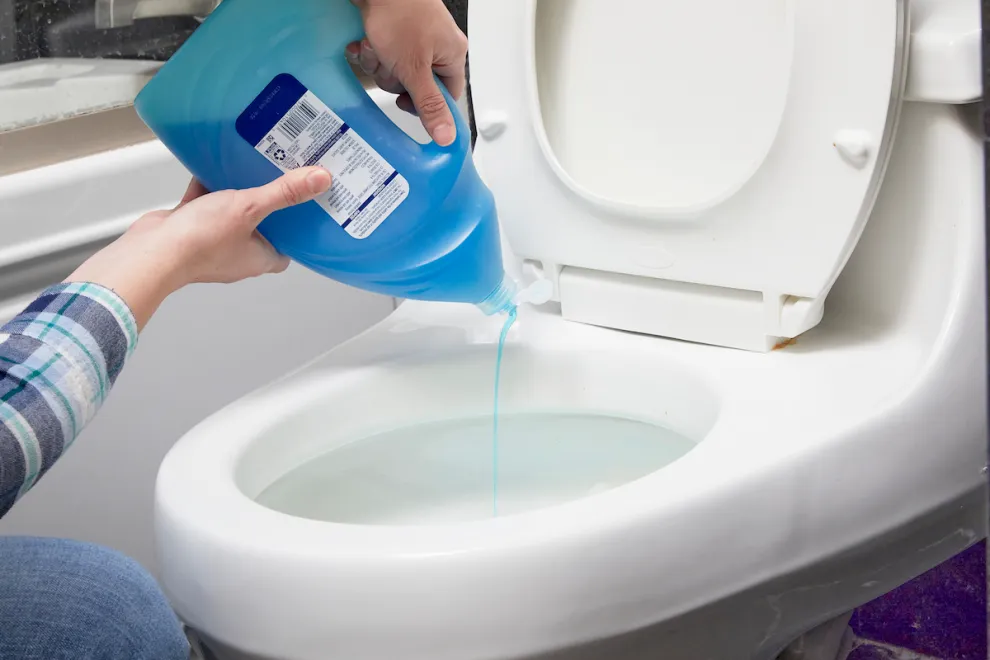
Dish soap isn’t just for washing dishes; it’s also a handy toilet unclogger. It works as a lubricant, which helps whatever’s clogging the pipe slide through more easily. This is especially useful if the clog is caused by something sticky or solidified, like grease or hardened toilet paper.
Here’s a step-by-step:
- Pour about half a cup to a full cup of regular dish soap into the toilet bowl.
- Let it sit for 20 to 30 minutes. This gives the soap time to seep into the clog and lubricate the pipes.
- After the wait, pour in hot water as described above.
- Let it sit for a little while longer, then try flushing.
You’ll be surprised how often this simple combo of dish soap and hot water does the trick. If the toilet is still clogged, repeat the process once or twice. The soap also cleans the inside of your toilet, so it’s a win-win.
Dish soap works by reducing the surface tension of whatever’s causing the clog, loosening it so it can move more freely. It’s safe for your plumbing and won’t harm the environment.
3. Mix in Baking Soda and Vinegar
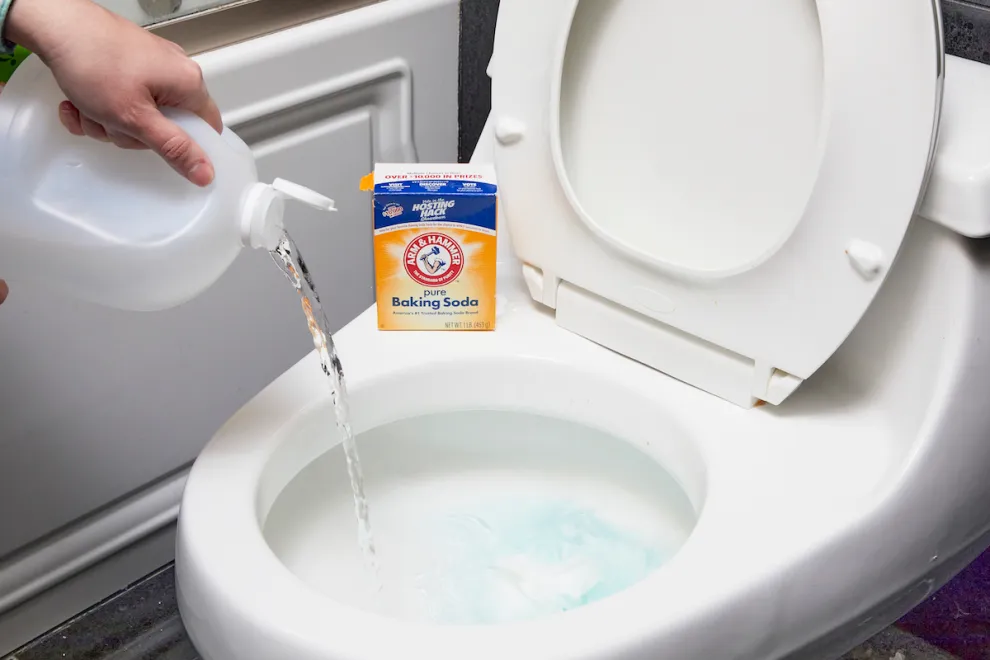
If you’re into natural cleaning, this one’s a favorite. Baking soda and vinegar create a fizzy, bubbling reaction that can help break down clogs made of organic material, like waste and toilet paper.
Here’s how to use it:
- Pour one cup of baking soda into the toilet bowl.
- Follow it with about two cups of white vinegar.
- You’ll see fizzing and bubbling—that’s the reaction working to break up the clog.
- Let the mixture sit for at least 30 minutes, but longer (up to an hour) is even better.
- After the wait, try flushing.
If the clog doesn’t clear right away, repeat the process. This is a gentle yet effective method, especially for minor blockages.
Why it works: Baking soda is a mild alkali, and vinegar is acidic. When combined, they create carbon dioxide bubbles that help agitate and loosen the clog. Plus, this mixture can help deodorize your toilet, making it smell fresher.
Just keep in mind, if the clog is severe, this might not work on its own, but it’s a great first step before moving on to more physical methods.
4. Use the Toilet Brush
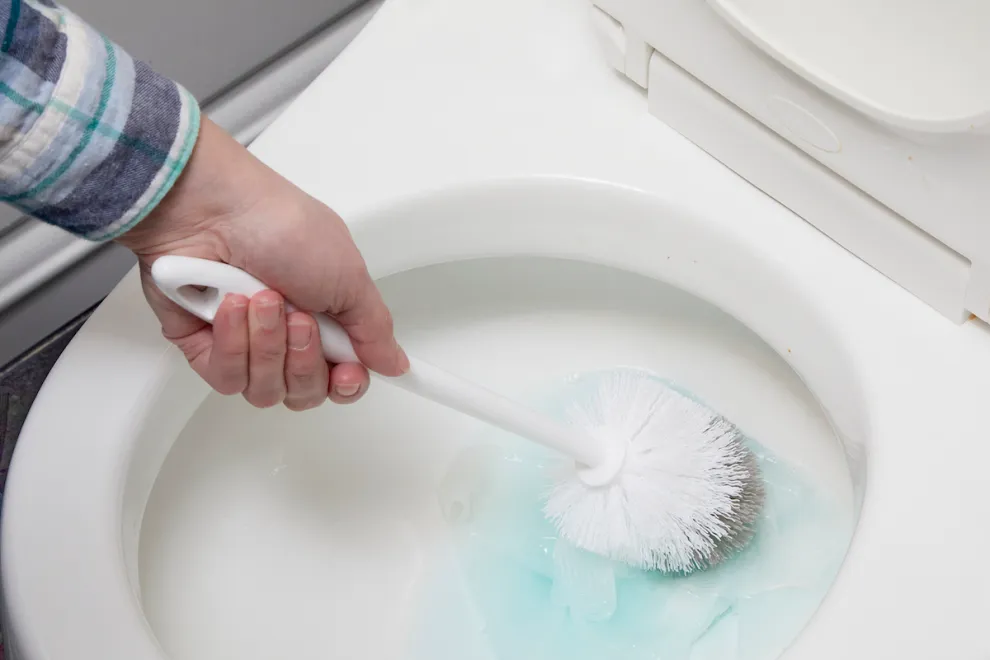
Surprisingly, your trusty toilet brush can be more than just a cleaning tool—it can double as a makeshift plunger!
Here’s the trick:
- Make sure your toilet brush is clean before using it.
- Insert the brush into the toilet bowl drain hole.
- Push and pull it up and down with a plunging motion to try to break up or push through the clog.
- Be careful and patient; you don’t want to splash water everywhere.
- After several plunging motions, try flushing.
While this method may not work for very stubborn clogs, it’s handy when you don’t have a plunger and the blockage isn’t too severe.
You can also try wrapping the brush head in a plastic bag secured with a rubber band to keep things more sanitary, especially if you’re worried about germs.
Using the toilet brush this way creates suction and pressure similar to a plunger, breaking up the clog and helping it move down the pipes.
5. Unwind a Wire Hanger
If you’re up for a bit of a DIY approach, an old wire hanger can be turned into a handy drain snake. This is especially useful if you suspect the clog is caused by something solid or lodged, like a small toy or excess toilet paper stuck far down the drain.
Here’s how to do it safely:
- Take a metal wire hanger and straighten it out as much as possible.
- Create a small hook at one end by bending the wire.
- Carefully insert the hooked end into the toilet drain.
- Gently work the hanger back and forth to dislodge or hook the clog.
- Be very cautious not to scratch the porcelain; go slowly.
- Once you feel resistance lessen or you retrieve the clog, flush the toilet.
Using a wire hanger is a very hands-on method and may not be suitable for everyone. If you have concerns about scratching or damaging the toilet, you may want to skip this one.
This technique is similar to using a professional drain snake, but without the cost. It’s very effective for removing objects causing blockages.
6. DIY Your Own Drain De-Clogger
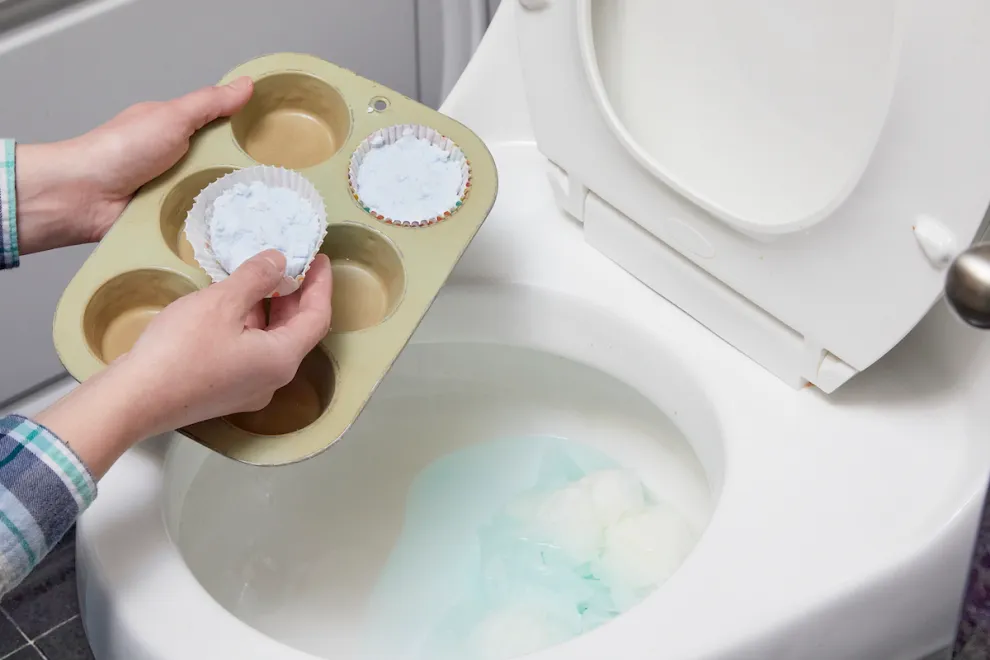
For those who want a stronger, homemade chemical method without buying harsh commercial products, you can create a DIY drain cleaner using common ingredients.
Here’s a popular recipe:
- Mix half a cup of baking soda, half a cup of salt, and half a cup of cream of tartar.
- Pour the mixture into the toilet bowl.
- Follow with about two cups of very hot water (again, not boiling).
- Let it sit overnight for best results.
- Try flushing the next day.
This combination is abrasive enough to break down tougher clogs but gentle enough not to damage your pipes if used occasionally.
The salt helps scrub, baking soda breaks down organic materials, and cream of tartar acts as a mild acid, helping the overall reaction.
Use this method sparingly; frequent use of abrasive mixtures can eventually wear down your plumbing.
7. Bust Out the Shop Vac

If you’re lucky enough to have a wet/dry shop vacuum, it’s one of the most powerful tools you can use to unclog a toilet.
Here’s the general idea:
- Set the vacuum to liquid mode.
- Create a tight seal over the toilet drain hole using the vacuum hose or a cloth.
- Turn on the vacuum to suck out the clog.
- You may want to empty the vacuum frequently, depending on the clog’s size.
This method is excellent for removing solid objects or heavy clogs that other methods fail to budge.
A word of caution: be prepared for potential messes, as this method can be messy if the seal isn’t perfect or the clog is heavy.
If you don’t have a shop vac, it’s worth considering for general home maintenance, not just toilets!
Final Thoughts
Clogged toilets happen to everyone, and while plungers are handy, they’re not the only tool in your arsenal. Using household items like hot water, dish soap, baking soda, vinegar, and even wire hangers, you can tackle many blockages quickly and easily.
The key is patience and trying the gentler methods first before moving on to more forceful solutions. And remember, prevention is the best cure — be mindful of what you flush and maintain your plumbing regularly.
Next time you face a clogged toilet without a plunger, keep calm and try these clever tricks. You might just save yourself a costly plumber’s visit and get back to your day faster than you thought.
FAQs
Can I use boiling water to unclog my toilet?
No. Boiling water is too hot and can crack your toilet’s porcelain or damage pipes. Always use hot but not boiling water.
How can I prevent future clogs?
Only flush toilet paper and human waste. Avoid flushing items like wipes, feminine hygiene products, or paper towels, which don’t break down easily.
What if none of these methods work?
If the clog persists despite your efforts, it’s probably time to call a professional plumber. Trying too hard or using harsh chemicals can cause more damage.
Are these methods safe for septic systems?
Yes! The natural methods like baking soda and vinegar are safe for septic tanks. Avoid harsh chemical drain cleaners as they can harm your septic system.




